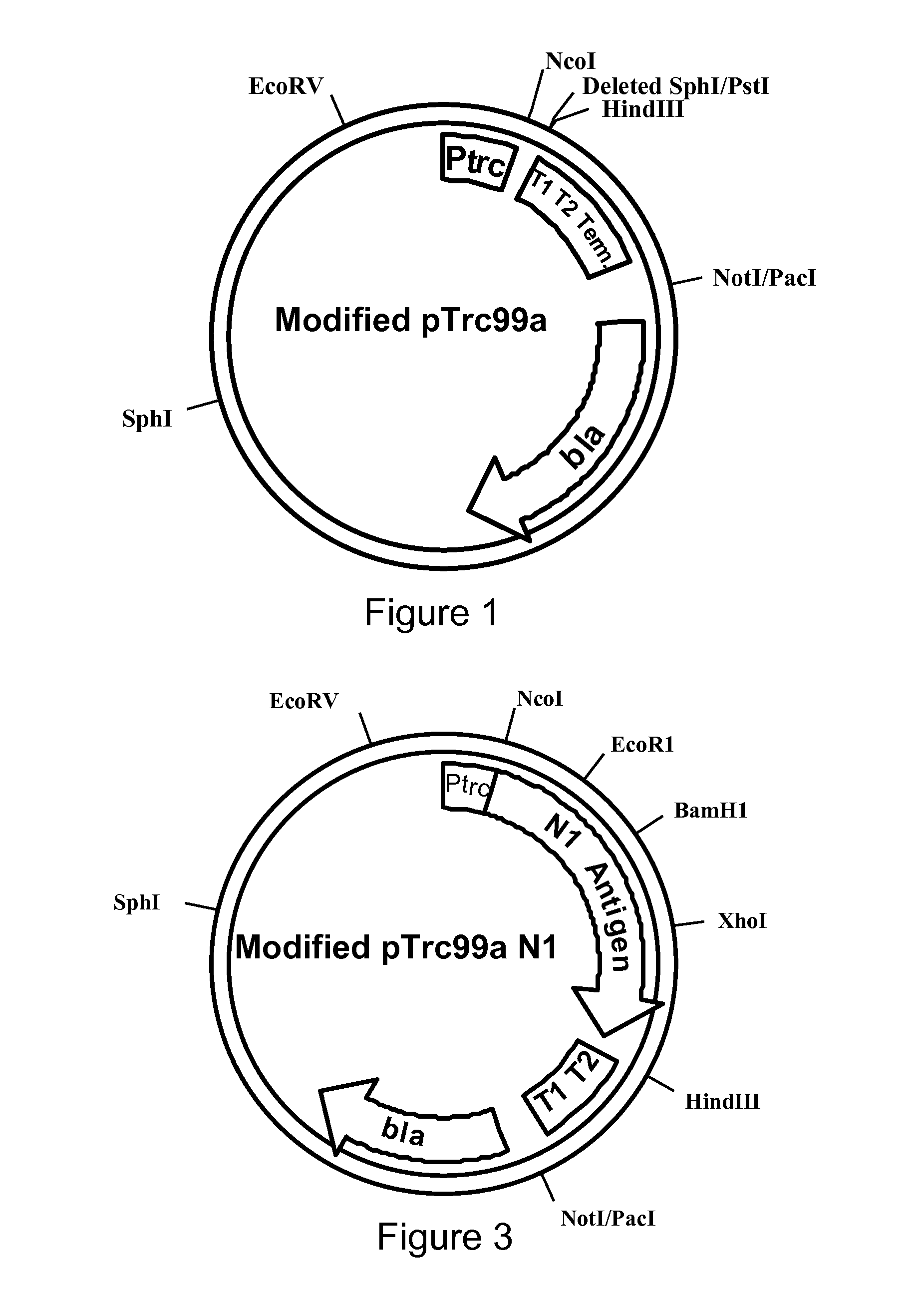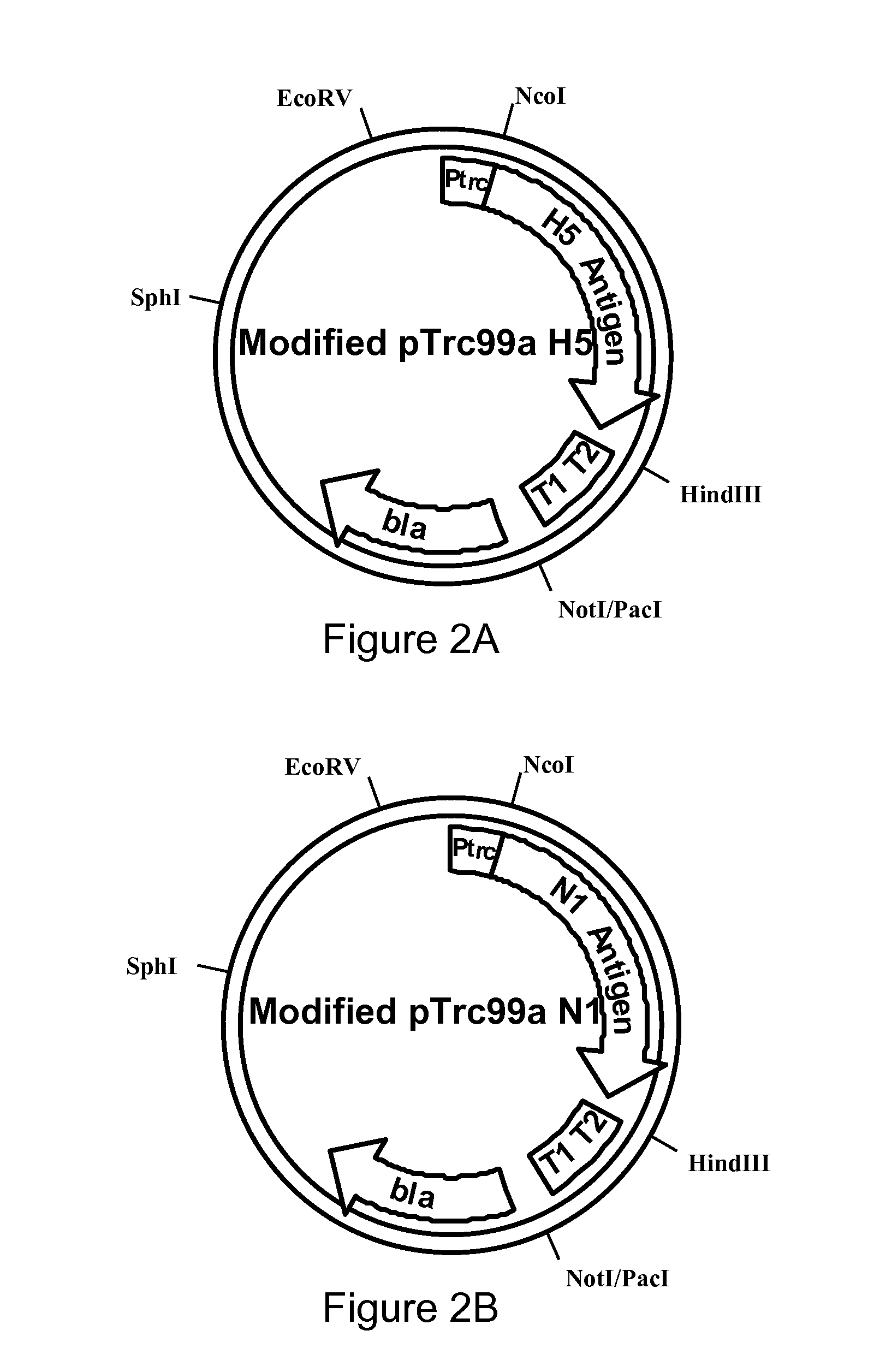Live bacterial vaccines for viral infection prophylaxis or treatment
a technology of viral infection and bacterial vaccine, which is applied in the direction of viruses, drug compositions, enzymology, etc., can solve the problems of reducing the effectiveness of vaccines not matching to the new variant, unable to achieve an adequate timescale, and ineffectiveness of oseltamivir (tamiflu®) in 50% of cases, so as to achieve the effect of raising the immune respons
- Summary
- Abstract
- Description
- Claims
- Application Information
AI Technical Summary
Benefits of technology
Problems solved by technology
Method used
Image
Examples
Embodiment Construction
[0072]The present invention is based upon a combination of bacterial vector and protein expression technology which results in a unique vaccine which is rapidly constructed in response to emerging avian influenza and their highly pathogenic derivatives. The present invention is directed to the construction bacterially codon optimized avian and human Influenza genes and their incorporation into a Salmonella strain for therapeutic use in the prevention of avian influenza and highly pathogenic derivatives. An antigen-expressing plasmid or chromosomal construct in the bacterial strains described herein may also contain one or more transcriptional terminators adjacent to the 3′ end of a particular nucleotide sequence on the plasmid to prevent undesired transcription into another region of the plasmid or chromosome. Such transcription terminators thus serve to prevent transcription from extending into and potentially interfering with other critical plasmid functions, e.g., replication or ...
PUM
| Property | Measurement | Unit |
|---|---|---|
| time | aaaaa | aaaaa |
| time period | aaaaa | aaaaa |
| time period | aaaaa | aaaaa |
Abstract
Description
Claims
Application Information
 Login to View More
Login to View More - R&D
- Intellectual Property
- Life Sciences
- Materials
- Tech Scout
- Unparalleled Data Quality
- Higher Quality Content
- 60% Fewer Hallucinations
Browse by: Latest US Patents, China's latest patents, Technical Efficacy Thesaurus, Application Domain, Technology Topic, Popular Technical Reports.
© 2025 PatSnap. All rights reserved.Legal|Privacy policy|Modern Slavery Act Transparency Statement|Sitemap|About US| Contact US: help@patsnap.com



